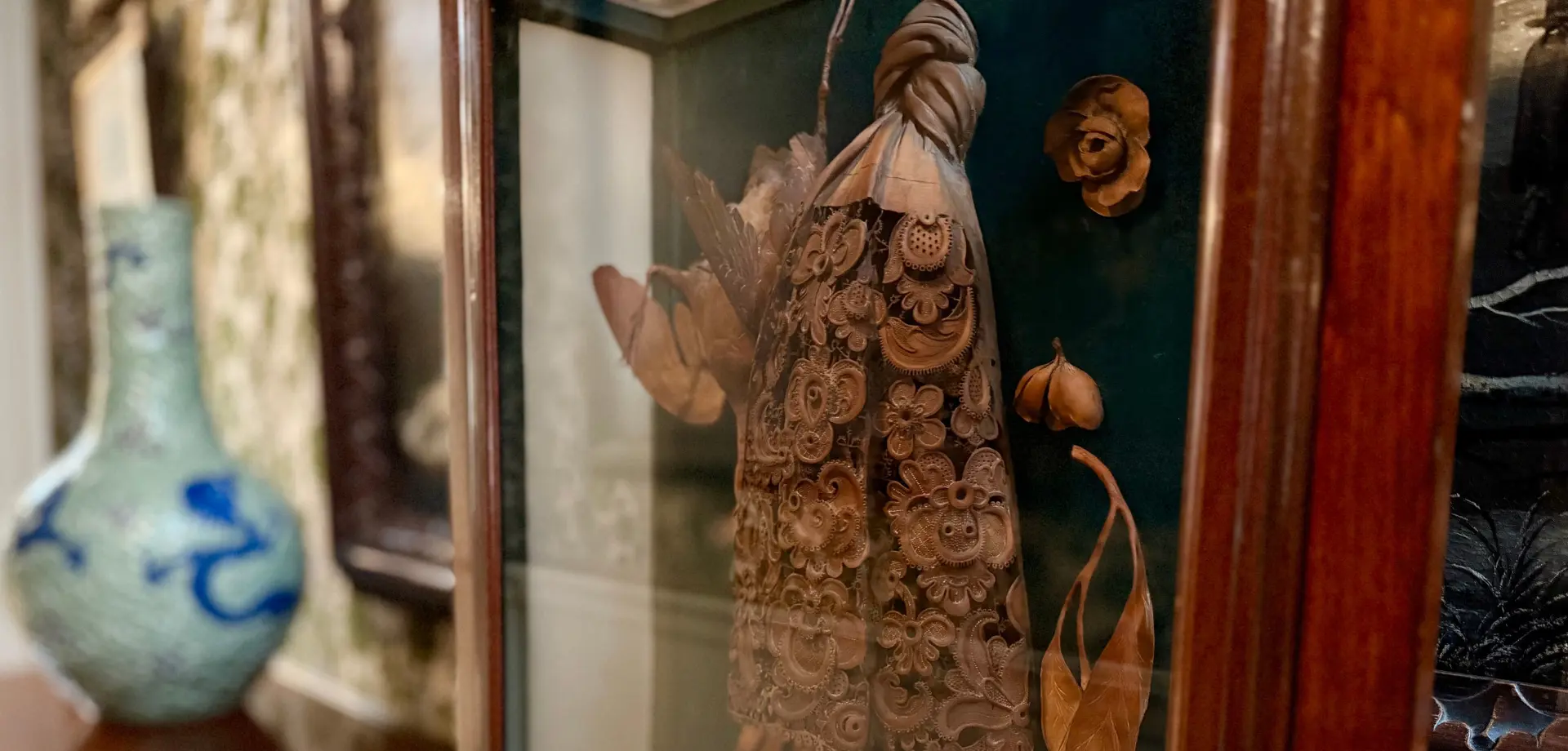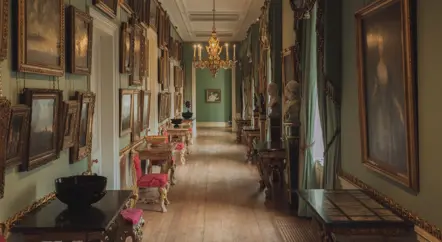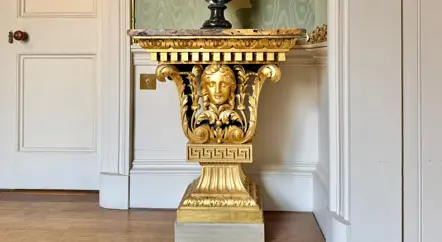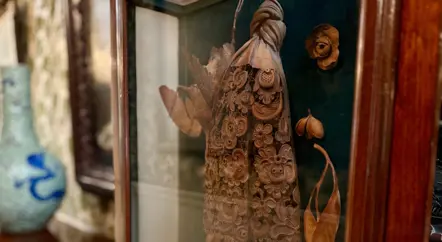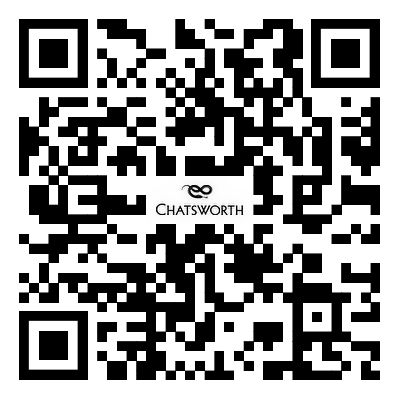The In Plain Sight blog series explores the fascinating stories behind often unnoticed objects along the visitor route at Chatsworth. From subtle details in furniture to lesser-known works of art, each object has a quiet history waiting to be discovered by those who pause and look more closely.
This blog explores one of Chatsworth’s enduring mysteries: the origins of a carved limewood cravat.
Part of a group of decorative reliefs, it has long been attributed to Grinling Gibbons, the most celebrated woodcarver of the late 17th century, owing to its striking resemblance to a famous example in the V&A.
Gibbons carved the V&A cravat as an advertisement of his skill - an astonishingly lifelike rendering of lace in wood. The piece later entered the collection of Horace Walpole, who is said to have worn it on at least one occasion as a real cravat.
Such feats of illusion reflected a broader fascination with trompe l’oeil - the art of deceiving the eye by representing one material as another. Chatsworth is full of examples of this playful artistry, from the violin door to the willow fountain, and Gibbons himself was known for similar visual jokes. At his house on Ludgate Hill, he displayed a carved flower pot so realistic that it delighted and deceived passers-by.
Gibbons worked at the height of his fame while the 1st Duke of Devonshire was building Chatsworth. He was employed on many of the grandest projects of the age, from Windsor and Hampton Court to Blenheim, Petworth, and Burghley. It seemed natural, therefore, that he was once thought responsible for Chatsworth’s intricate carvings. Yet we now know that Gibbons never worked at Chatsworth. Instead, much of the early carving - both in wood and stone - was carried out by a team of craftsmen led by Samuel Watson, a talented local artisan from Heanor in Derbyshire.
Watson arrived at Chatsworth by 1690 and worked here until 1711. Initially, Watson worked for the London carvers Thomas Young and Joel Lobb, as his name appears on archival receipts for these men. After 1694, however, he signs for himself as an independent master. His work can be seen across the house: in the Chapel, the Great Chamber, and the gallery in the Library, as well as in stone carvings such as the coat of arms on the west façade, the marble buffet (basin for washing wine glasses), and elements of the Cascade. His surviving drawings and accounts are among the most interesting visual records of the 1st Duke’s rebuilding of Chatsworth.
Watson’s sketches include designs for his own work at Chatsworth - the altar and gallery in the Chapel, detailing from the State Apartments, and the west front pediment - as well as studies after artists he admired, including Gibbons’ carvings at St James’s Piccadilly and the Ferrers Monument at Tamworth.
Strengthening the case for his authorship of the cravat is a drawing by Watson for an overmantel featuring a cravat and medallion in a similar arrangement. The finished overmantel has not been identified, so it may have been altered or never completed, leaving only the cravat itself.
An intriguing detail adds to the mystery: the portrait medallion accompanying the carving. It was long thought to depict Gibbons, though the features differ considerably from known portraits. The face is more square-jawed, and the figure wears natural hair rather than the elaborate wig Gibbons favoured. If the carving is indeed by Watson, could it be his self-portrait? No confirmed likeness of him survives, though a portrait by Sir James Thornhill - who worked at Chatsworth around 1707 - is recorded to have existed but is now lost.
Whether by Gibbons or Watson, the carved cravat remains a masterpiece of illusion and craftsmanship - an object that continues to invite curiosity, reflection, and debate among those who pause to look a little closer.
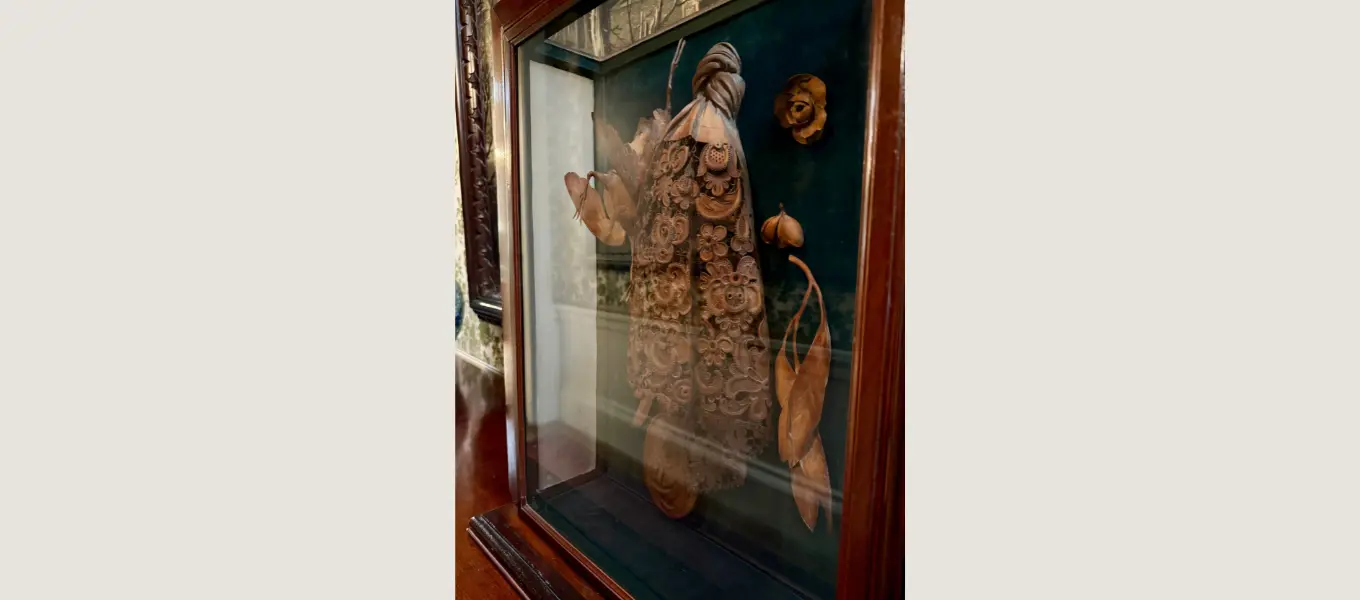
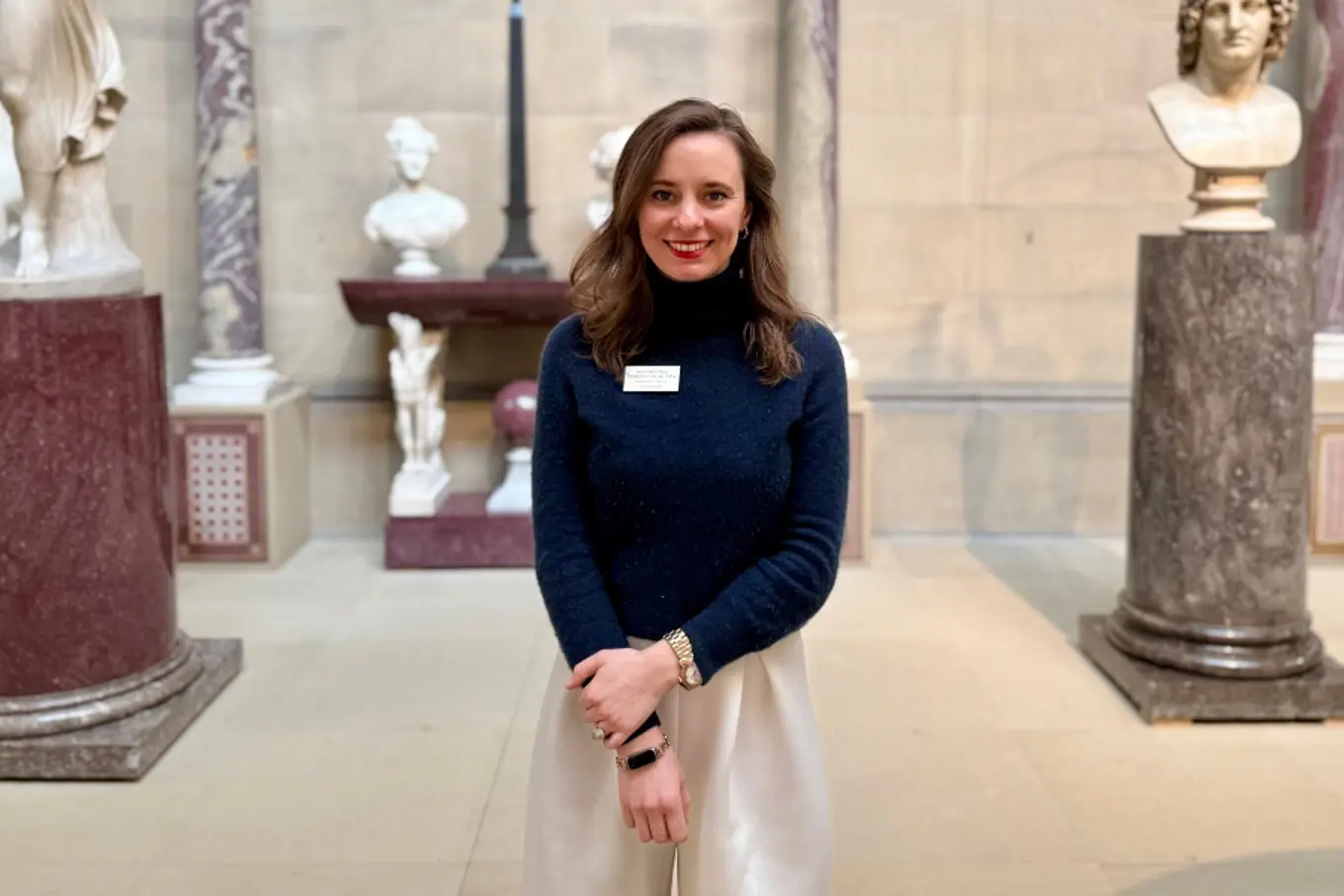
Listen
Listen to Katherine Hardwick-Culpa, Assistant Curator at Chatsworth, talk about this piece in the Past Matters podcast (27 mins).


